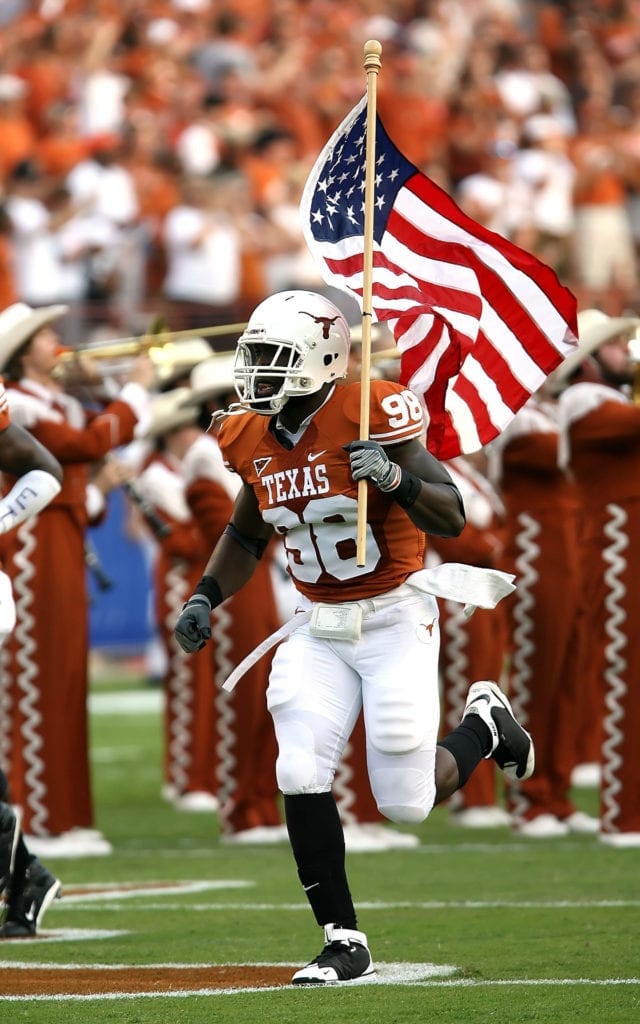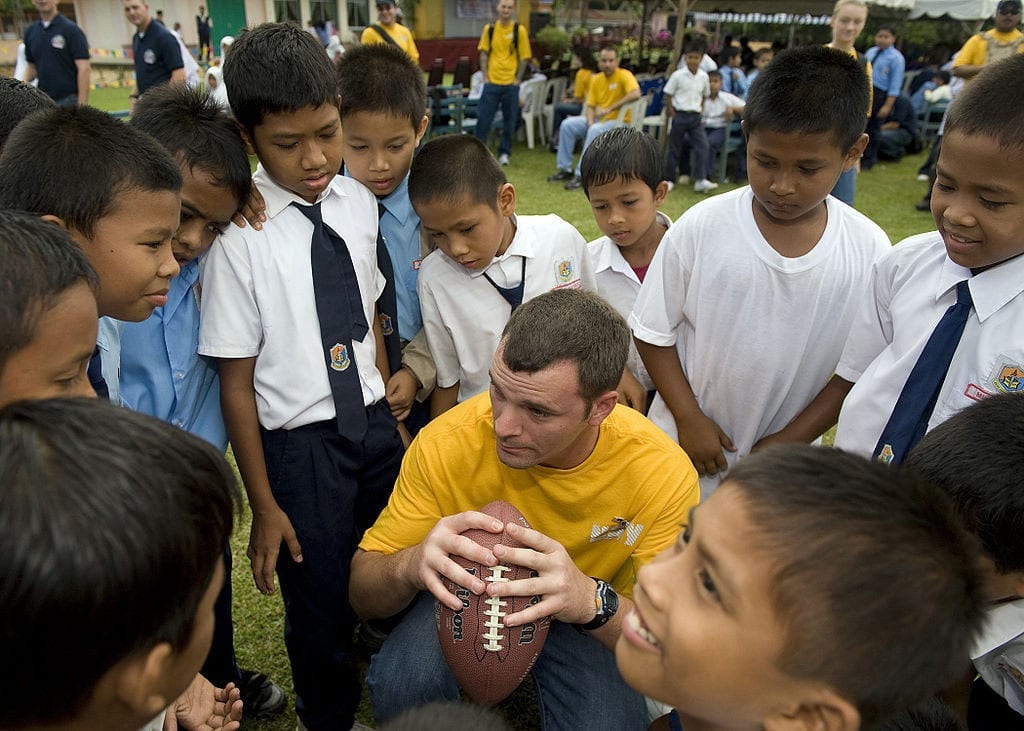| Now played in nearly 100 countries across the globe, this endeavor involving helmets, shoulder pads and pigskin is widely considered America’s symbolic sport, yet its appeal is fast growing far beyond our borders. |

Frank MacDonald, Special Contributor to Atavus, May. 15th 2019
When you begin telling people about a world game featuring teams of 11 players, they might stop you right there, saying they’ve heard it all before. But no, this is not futbol, fussball or what North America knows as soccer. It’s American football.
Now played in nearly 100 countries across the globe, this endeavor involving helmets, shoulder pads and prolate spheroid-shaped pigskin is widely considered America’s symbolic sport, yet its appeal is fast growing far beyond our borders.
Of course, soccer (association football) remains the faraway leader in world sports popularity, with some 3.5 billion fans across the planet. American football is just a fraction of that but undergoing a growth spurt. In China, more and more of the 1.3 billion population is watching the NFL and in the past 10 years actual teams have gone from zero to 100-plus.
Quarterbacks are now barking “hut-hut!“ on five continents, everywhere from Thailand to Turkey, Russia to Australia. It’s the young and not-so-young, some looking to do something different and others seeking to realize a dream.

“The Brazilians buy into the culture around American football,” says Dan Levy, a U.S. citizen now coaching and conducting clinics in South America’s most populous country. “The pageantry, tailgates, touchdown celebration – everything that is American.”
While the defunct NFL Europe and the occasional international game in London and Mexico City have served to create some interest, the overwhelming majority of new international fans have come to know the gridiron game through their flatscreens and laptops.
To some, football’s equipment resembles the futuristic look of Marvel movie characters, making it a hit with millennials worldwide. In Poland, it’s an alternative sport for youth who perhaps don’t wish to play the sports of their parents’ and grandparents’ generations. Other youth and young adults flock to it because they had plateaued in soccer or simply felt their body type is better suited to a game of greater physicality.
Learning to play overseas is challenging. There is no heritage, no resident expertise to draw upon. Beyond the rules, there are the basics of throwing, catching and kicking that aforementioned spheroid, not to mention the strategic collisions – blocking, tackling – that occur on every play.
In some cultures, football faces an uphill struggle for acceptance. There are the respective countries’ entrenched major sports, but football has its detractors, be it the start-stop action or its violence.
Whether it’s Australia, Austria or England, there is an emphasis on safety, including teaching a safe tackling technique. The International Federation of American Football is the governing body to 105 gridiron associations. The IFAF is dedicated to a ‘Duty of Care,’ ensuring that people can engage the game, on the field or off, in a safe and inclusive manner. Through its relationship to USA Football, the IFAF makes the Heads Up Football training program available to any national federation in its membership.
Gridiron Australia demands that each coach be accredited through USA Football. That includes passing the Level 1 Tackle Certification Course and getting annual re-certification. In China, the Great Stone Gridiron teaches skills and safety to children up to age 12.
American football is the second-most popular sport in northern Mexico (it ranks sixth overall, nationally), with two collegiate leagues. Canada, of course, has long played gridiron football at the amateur and professional level, albeit with three downs, 12 players and a larger playing field.
In the United Kingdom, the British American Football Coaching Association is devoted to making the game better and safer through coach education. BAFCA regularly promotes USA Football webinars regarding Advanced Tackling Technique. “Our commitment to develop a safer game inspires us to provide the best qualifications, resources and programs, keeping the spirit and integrity of the game alive for everyone,” states the BAFCA website.
Teaching the game outside the U.S. can be taxing, for any number of reasons. Although the participation numbers are growing, it’s still a niche sport, and many come join the game at a later age, even as adults. Unless they have been involved in rugby, there really is nothing quite like the gridiron game.
According to Gray Levy, whose coaching journey has taken him to 10 different countries on three continents, the biggest culture shock for an American coach working overseas is how practice is approached. American coaches like Levy are much like missionaries, not just teaching but continually promoting and recruiting. When going abroad, they must pack plenty of patience.
“Most of us come from either high school or college coaching,” he writes in his blog. “In both cases, practice isn’t optional, it’s a priority. Football in the U.S. is generally played by young men without many responsibilities, or at the higher levels for scholarships and money. These expectations aren’t realistic for most European players… grown men with families, kids and careers. They take business trips, have to care for their kids and work football in as best they can.”And Gray Levy is speaking of his experience in Germany, where the game has comparatively deep roots. The German Football League is celebrating its 40th anniversary in 2019, with 16 teams playing with NCAA rules. There are 35,000 registered players. Germany, along with Austria, are considered to sponsor the highest level of play outside North America.

Premier Players International, based in Frankfurt, organizes workouts and recruiting combines throughout Europe. Sylain Yondjouen of PPI claims to have over a dozen players destined to join American collegiate programs in 2019 and 2020. Yondjouen believes that number could eventually climb to near 100.
Just as some Americans aspire to play soccer in Europe (Pennsylvania’s Christian Pulisic recently starring for Germany’s Borussia Dortmund), Germans harbor dreams of playing gridiron on Sundays in the States. The NFL is now creating slots for overseas players on practice squads. Some are already living the dream.
Moritz Böhringer was the first European player to be selected in the NFL Draft without playing any college football. Böhringer, who first encountered the game on YouTube as a 17-year-old in Stuttgart, has played three seasons (through 2018) as a tight end for Minnesota and Cincinnati. Said his agent, “He just came out of the blue.” He’s playing a foreign game in a faraway land, and realizing the American Dream.